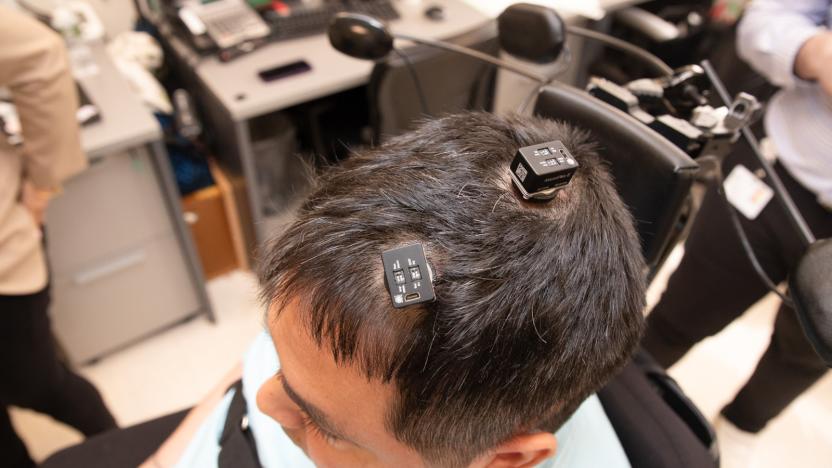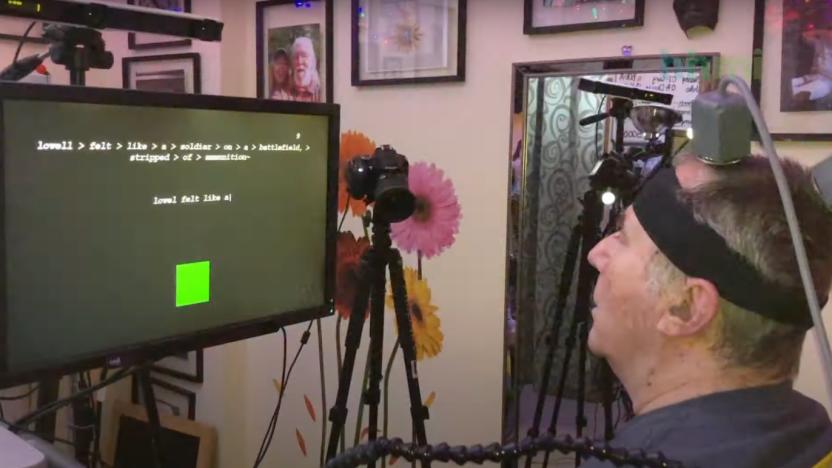brain implant
Latest

AI-enabled brain implant helps patient regain feeling and movement
The implant sends signals to a computer, which interprets the patient's intentions and turn them into action.

Elon Musk’s Neuralink delays show-and-tell event to November 30th
On Sunday morning, Elon Musk tweeted that the showcase would take place on November 30th.

Elon Musk's Neuralink will show brain implant progress at a Halloween show-and-tell
Neuralink will show off its progress in brain implant tech at a Halloween event.

Brain implant lets people with paralysis write using their minds
Researchers from Stanford University have created a brain chip interface that allows the paralyzed to write on-screen using their thoughts.

Co-founder of brain implant startup Neuralink leaves the company
Max Hodak has left Neuralink, the brain implant company he co-founded with Elon Musk.

Mind-operated robot arm helps paralyzed woman have her cup o' joe (video)
Researchers at the Braingate2 consortium have made a breakthrough that allows people with spinal cord or stroke injuries to control robotic limbs with their minds. The original project allowed subjects with motor cortex-implanted chips to move cursors on a screen with their minds, but they can now command DEKA and DLR mechanical arms to grasp foam balls and sip coffee. Researchers noted that dropped objects and missed drinks were frequent, but improved brain sensors and more practice by subjects should help. To see the power of the mind move perhaps not mountains, but good ol' java, jump to the video below.

BioBolt brain implant could help the paralyzed walk again
Controlling a cursor with your brain? Yawn. Restoring movement to paralyzed mice? Color us unimpressed. Help a wheelchair-bound man walk again using only his thoughts? Now we're talking. That's the goal of researchers at the University of Michigan who have developed BioBolt, a (comparatively) noninvasive implant that rests on top of the cortex rather than penetrate it. The device is inserted through an easily-covered, dime-sized hole in the skull and feeds patterns from firing neurons to a computer using your epidermis (which is showing, by the way) as a conductor. The ultimate goal of helping the paralyzed walk again is still years away but, in the meantime, it could be used to suppress seizures or diagnose diseases like Parkinson's. Everyday this mind over matter thing sounds a little less like a load of bullpuckey.

Scientists develop implants that melt onto the surface of the brain
Looks like brain implants have just got a lot more effective -- and a lot creepier. Developed by researchers at the University of Pennsylvania School of Medicine in Philadelphia, the new bio-integrated electronics eschew electrodes resembling needles or semi-flexible wires for an ultrathin flexible material that is made partly from silk. Since the new material "essentially melts into place" (scientists compare it to shrink-wrap), it hugs the brain, getting more effective readings than previous technology. It is hoped that the new technology will prove much more effective -- and extremely beneficial for patients with epilepsy, spinal cord injuries, and other neurological disorders. According to John Rogers, Ph.D., the man who invented the flexible electronics at the University of Illinois, "It may also be possible to compress the silk-based implants and deliver them to the brain, through a catheter." We wish these good folks the best of luck with their research -- and we really, really hope that we never have anything shot into our brain with a catheter. PR after the break.





